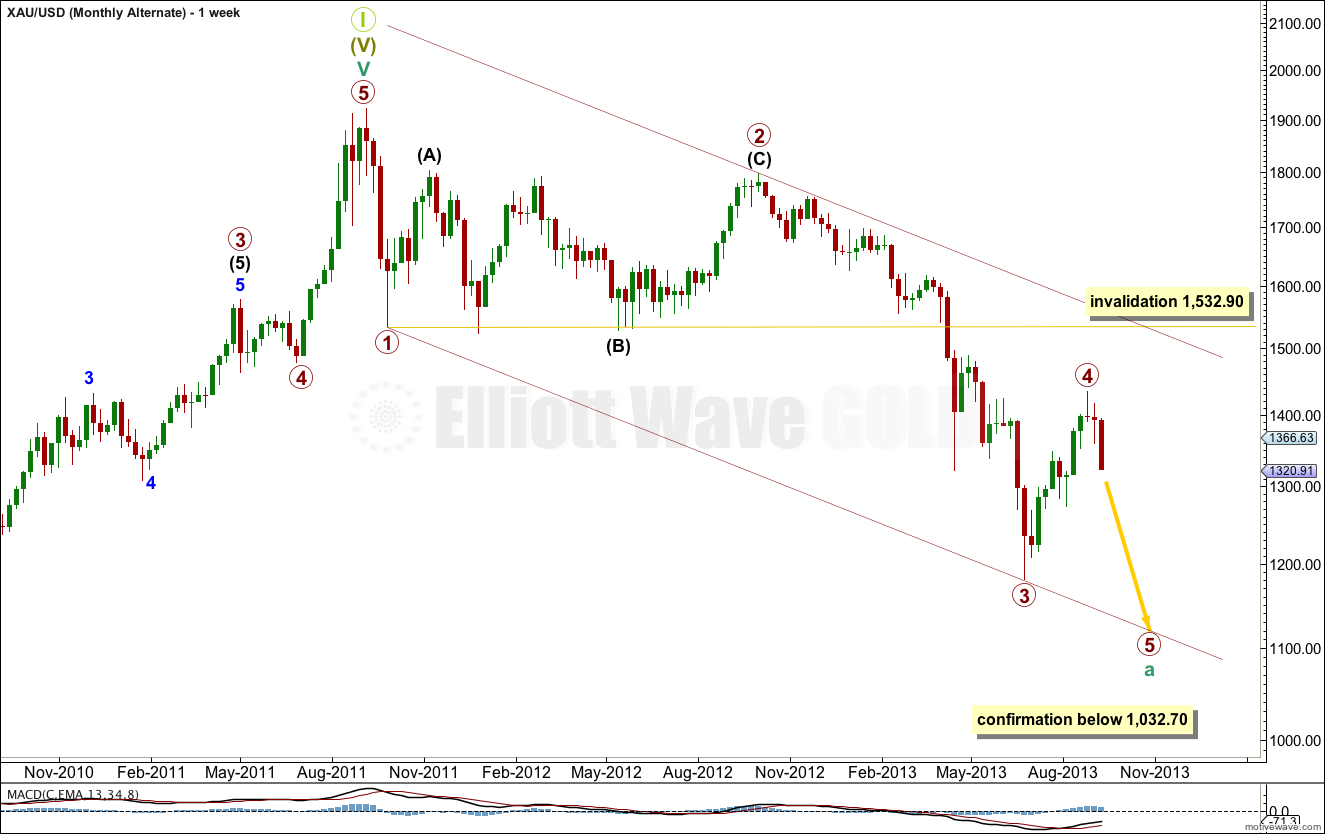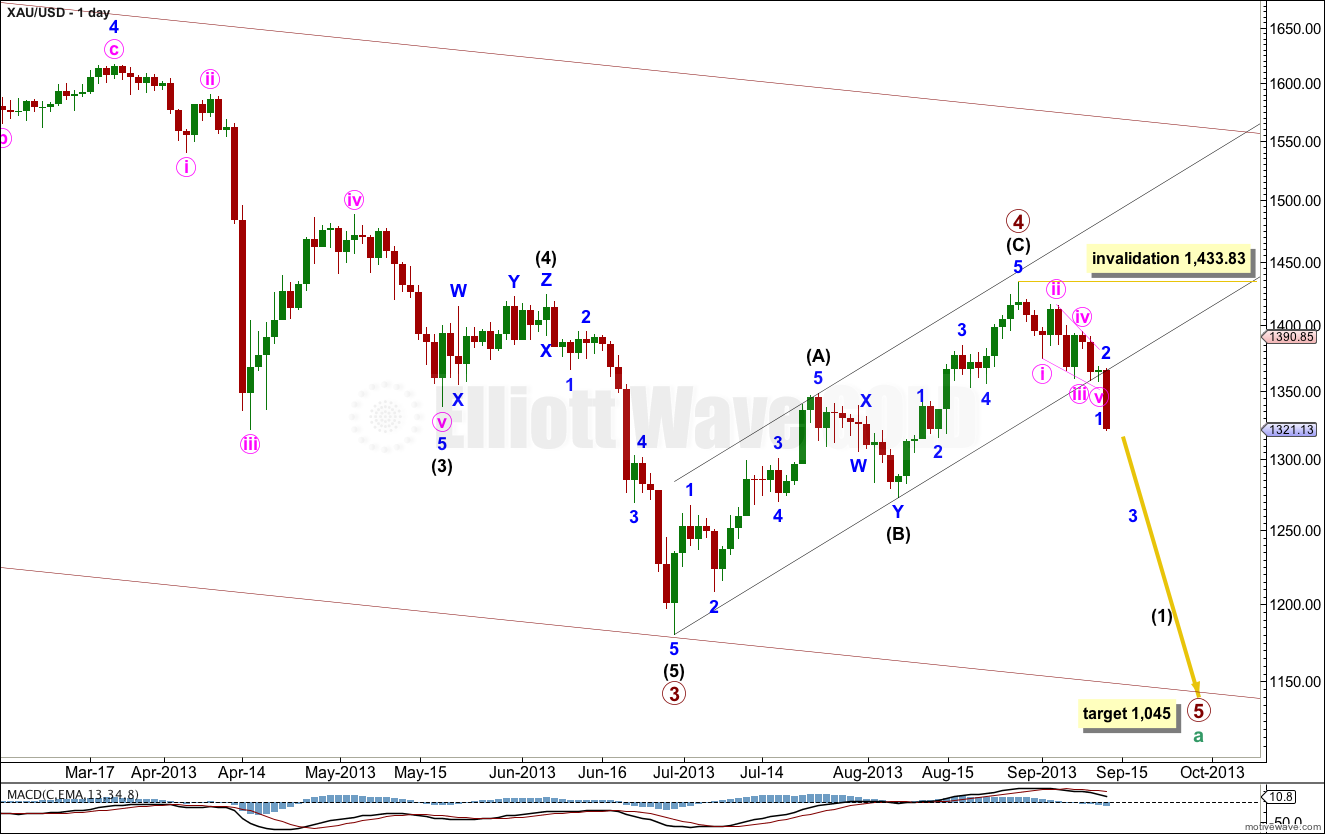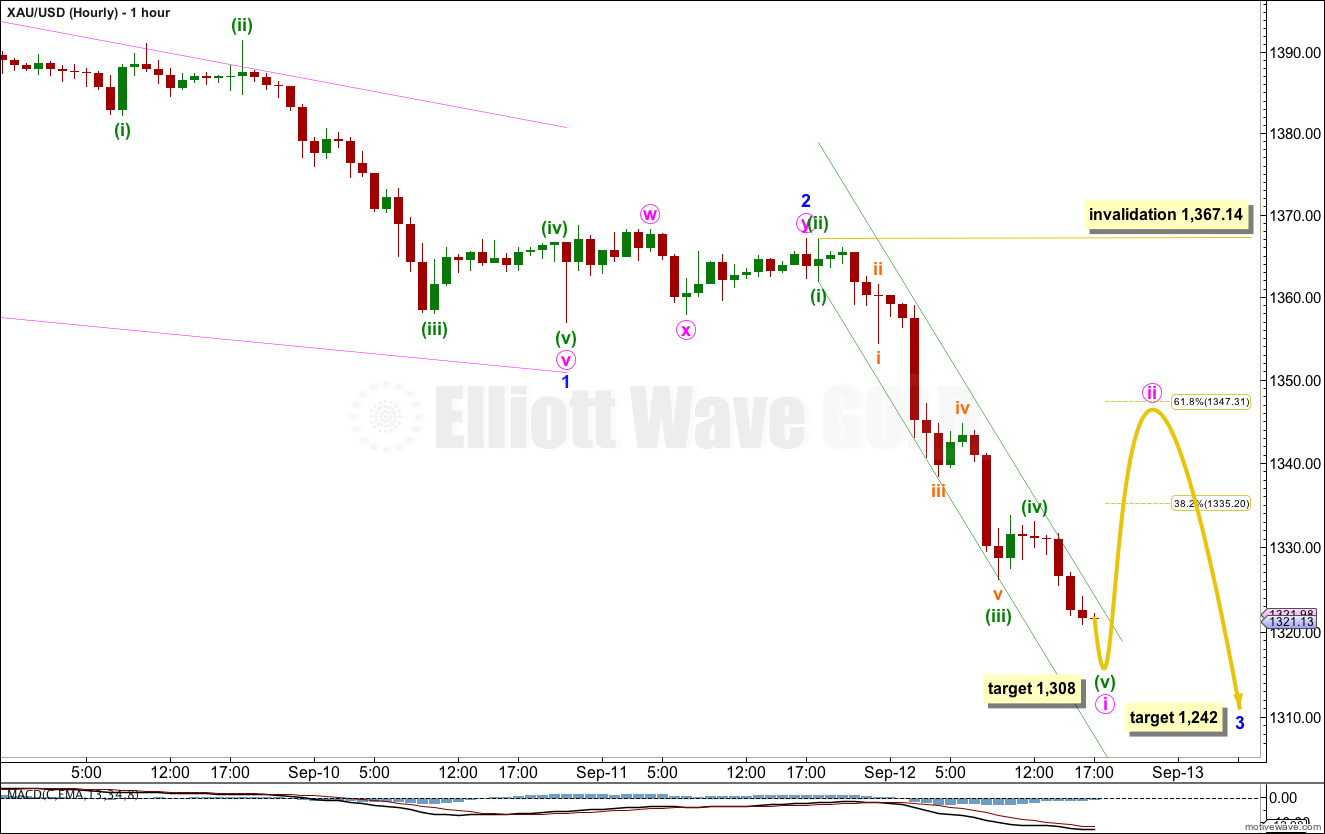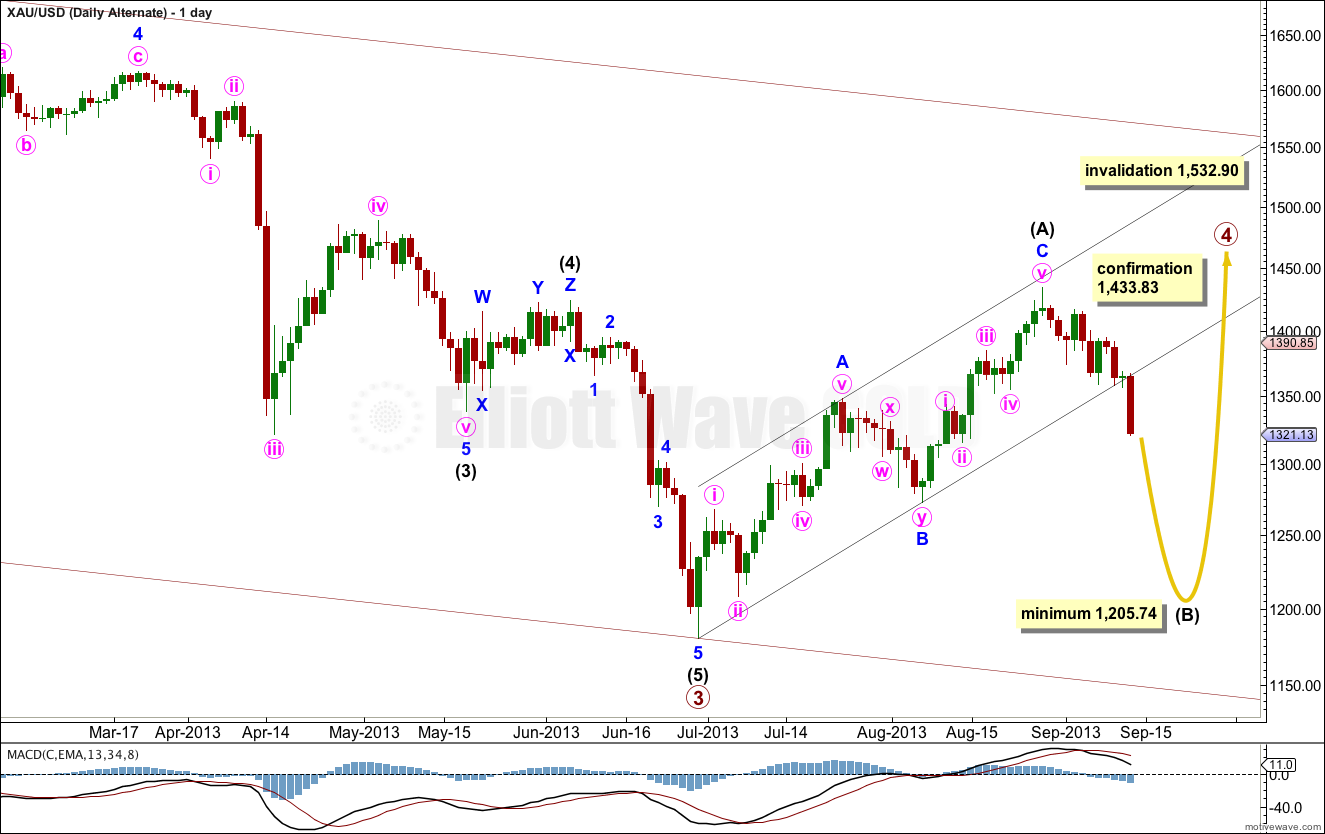Yesterday’s analysis stated the situation was unclear, and introduced a new alternate wave count. Today movement below 1,344.26 invalidated the main wave count and confirmed the alternate.
Click on the charts below to enlarge.
This weekly chart shows all downwards movement from the all time high at 1,921.15.
So far we have three waves down and a fourth wave up which may or may not be completed.
Primary wave 1 lasted a Fiboancci 3 weeks, primary wave 2 lasted 53 weeks (2 short of a Fiboancci 55), primary wave 3 lasted 37 weeks (not close enough to a Fibonacci 34 to say it has a Fibonacci duration), and so far primary wave 4 has lasted 9 weeks (no Fibonacci relationship).
Primary wave 3 was 12.54 short of 1.618 the length of primary wave 1.
Primary wave 2 was a time consuming regular flat correction, and deep at 68% of primary wave 1. Given the guideline of alternation we may expect primary wave 4 to be a shallow zigzag, less than 50% of primary wave 3, and may be brief. For this reason it is most likely to be over now as a 41% zigzag correction of primary wave 3.
Draw a parallel channel about this movement. Draw the first trend line from the lows of primary waves 1 to 3, then place a parallel copy upon the high of primary wave 2. Expect primary wave 5 to find support at the lower edge of this channel.
Movement below 1,032.70 would confirm this alternate at cycle degree.
We now have a clear breach of the parallel channel containing the upwards wave labeled primary wave 4. This movement is now confirmed as a completed three wave correction. The next wave down has begun.
Within primary wave 4 intermediate wave (C) is just 7.08 short of equality with intermediate wave (A).
At 1,045 primary wave 5 would reach equality in length with primary wave 1.
Within this new downwards movement minor wave 1 unfolded as a leading contracting diagonal. Leading diagonals in first wave positions are usually followed by deep second wave corrections, and this is what I had expected. However, this is a guideline and not a rule. It does not always happen, as it failed to occur here: minor wave 2 was a very shallow combination.
Minor wave 3 has not passed the middle yet. We should see an increase in downwards momentum.
Within primary wave 5 no second wave correction may move beyond the start of the first wave. This wave count is invalidated with movement above 1,433.83.
So far to the downside within minor wave 3 we have a clear five wave impulse. The final wave on the five minute chart does not look complete. It may continue lower. At 1,308 minuette wave (v) would reach 0.618 the length of minuette wave (iii).
There is no Fibonacci ratio between minuette waves (i) and (iii).
Within minuette wave (iii) there are no adequate Fibonacci ratios between subminuette waves i, iii and v.
When the small best fit parallel channel about minute wave i is complete then we should expect a deep second wave correction. Draw a Fibonacci retracement along the length of minute wave i and expect minute wave ii to reach up to the 0.382 or, more likely, the 0.618 Fibonacci level of minute wave i.
Thereafter, the next downwards movement should show an increase in downwards momentum.
Minute wave ii may not move beyond the start of minute wave i. This wave count is invalidated with movement above 1,367.14.
Alternate Daily Wave Count.
Alternatively, primary wave 4 may be an incomplete flat correction (or double combination). A flat correction requires intermediate wave (B) to reach a minimum of 90% the length of intermediate wave (A) at 1,205.74. A double combination does not have a minimum point for downwards movement, but it still requires a corrective structure downwards to complete.
At this stage this alternate does not diverge from the main wave count. They both expect downwards movement. It is the structure which is different. This alternate expects a corrective structure downwards, most likely a zigzag, where the main wave count expects an impulse.
Careful attention to structure in the coming weeks will clarify if this alternate is viable.
At this stage this alternate has a lower probability because it would see primary wave 4 not show alternation in structure with primary wave 2.




